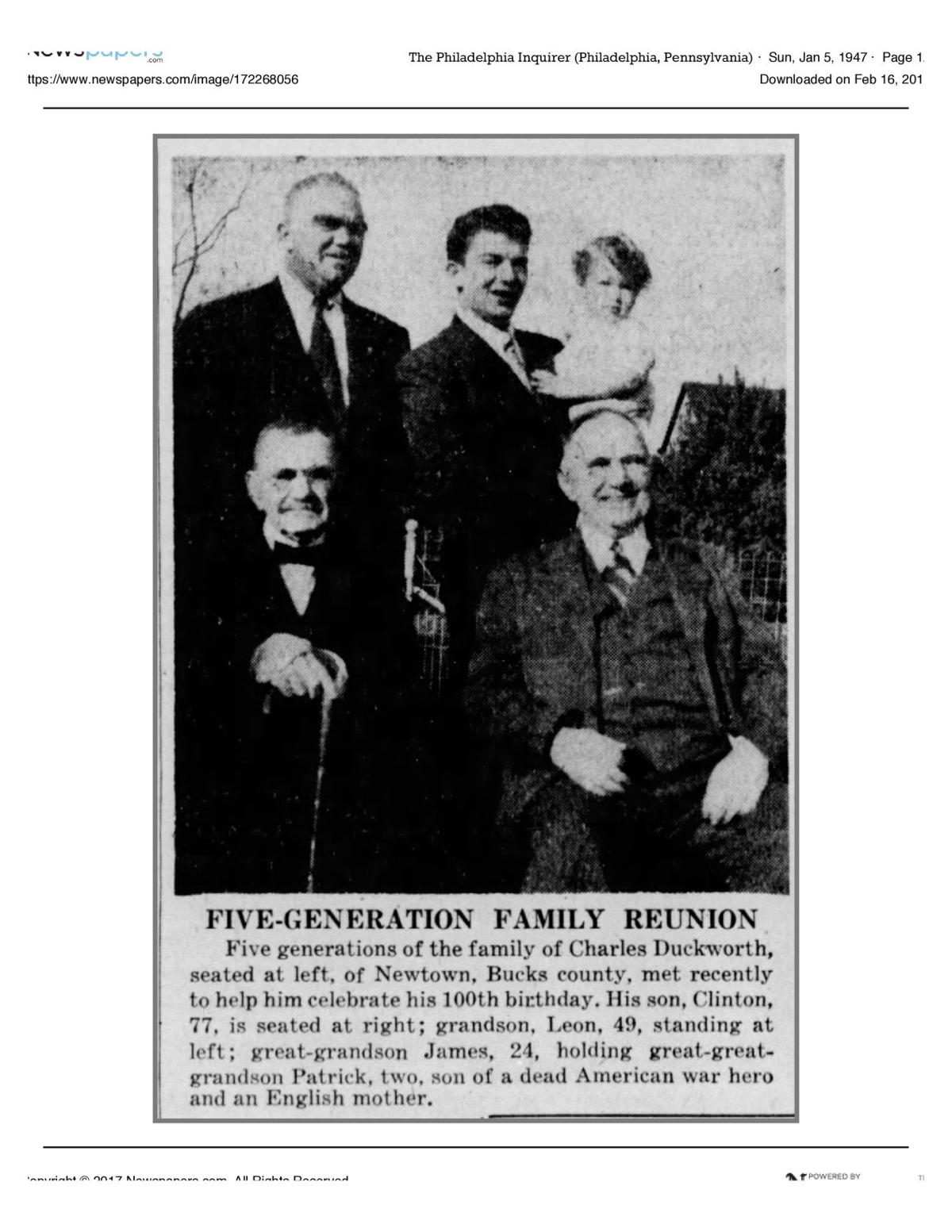Our project has been the subject of two newspaper stories, in the Doylestown Intelligencer earlier this winter and more recently in Lancaster's newspaper. That article might still be available at this site on Lancaster Online. Jen Kopf, the reporter, did a very nice job summarizing what Lauren has learned and included a lot of images we've found so far in our work.
In just a few days (the article ran Friday) Kopf's story led two people to reach out to me. Today I heard from one of Bill's relatives who still lives in Lancaster. She was thrilled to see the story in the paper, had hoped we knew of Bill's brother (yes), and requested that we record Lauren's eulogy and send it to the family.
Earlier, someone reached out to me who identified himself as a genealogist, but I suspect he might be a military historian. I don't know of any connection he has to Bill's family. He was bothered that, in his opinion, Lauren and I had the details of Bill's death all wrong. I had the chance to tell him that there are conflicting reports of the precise nature of Bill's death, though it's not in doubt that he died as a result of enemy fire on Omaha Beach.
The Institute makes it a point to put out press releases to the hometowns of our soldiers, and I can see why they do. History matters. There is an audience of people who crave to learn from the work of others for reasons that are obvious (family) and not really that obvious (the mysterious figure who questioned our historiography). Lauren's work won't just happen in a vacuum, and it won't simply get shelved never to be seen again.
 |
| The article included one of the neatest artifacts we've found. There was a picture of five generations taken in the late 1940s. The boy in the photo is Patrick Duckworth, son of 1st Lt. Edmund (Bill) Duckworth. The man holding Patrick is Jim Duckworth, who still lives in Arizona. Lauren spoke with him last week. |
In just a few days (the article ran Friday) Kopf's story led two people to reach out to me. Today I heard from one of Bill's relatives who still lives in Lancaster. She was thrilled to see the story in the paper, had hoped we knew of Bill's brother (yes), and requested that we record Lauren's eulogy and send it to the family.
Earlier, someone reached out to me who identified himself as a genealogist, but I suspect he might be a military historian. I don't know of any connection he has to Bill's family. He was bothered that, in his opinion, Lauren and I had the details of Bill's death all wrong. I had the chance to tell him that there are conflicting reports of the precise nature of Bill's death, though it's not in doubt that he died as a result of enemy fire on Omaha Beach.
The Institute makes it a point to put out press releases to the hometowns of our soldiers, and I can see why they do. History matters. There is an audience of people who crave to learn from the work of others for reasons that are obvious (family) and not really that obvious (the mysterious figure who questioned our historiography). Lauren's work won't just happen in a vacuum, and it won't simply get shelved never to be seen again.
Comments
Post a Comment